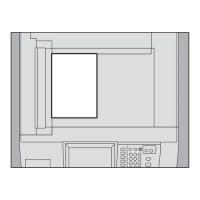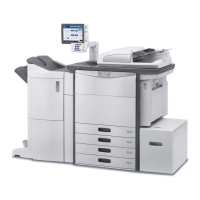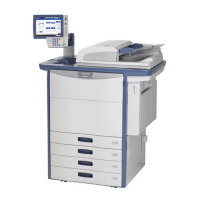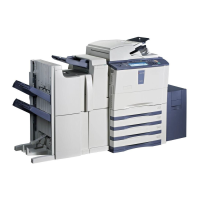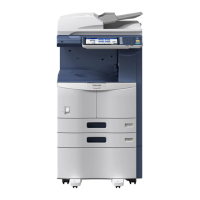e-STUDIO555/655/755/855 © 2009 - 2011 TOSHIBA TEC CORPORATION All rights reserved
PAPER FEEDING SYSTEM
8 - 8
8.3.5 General operation
[A] From power ON to standby status
(1) When the equipment is turned ON, the tray-up motor-1 (M21) is activated and 1st drawer tray
starts to rise. When the 1st drawer tray-up sensor (S32) is turned ON (H -> L), the tray-up motor-
1 (M21) is turned OFF and the tray is stopped. At this time, if the 1st drawer empty sensor (S31)
is OFF (L), it is judged that there is no paper in the drawer. With the 1st drawer empty sensor
(S31) being ON (H), there is paper in the drawer. The tray stops at the raised position regardless
of availability of paper. Then the tray-up motor-1 (M21) starts to rotate in reverse and 2nd drawer
starts to be lifted. 2nd drawer tray is stopped in the same manner as 1st drawer tray and the 1st
drawer empty sensor (S31) detects if there is paper in the drawer.
(2) When the drawer is not completely inserted when the equipment is turned ON, the tray for that
drawer tray is not raised. When the drawer is inserted completely, the drawer tray is raised and
checks the availability of the paper.
(3) When either of the sensors at the transport path is ON (meaning there is paper on the transport
path) when the equipment is turned ON, it is determined that a paper jam has occurred and no
operation is enabled until the paper is removed.
[B] Standby status
(1) After the drawer tray is moved up and availability of paper is checked as described above, the
equipment enters the standby state. In the standby mode, the drawer tray remains at raised
position.
(2) When a drawer is inserted or removed in the standby state, the tray is raised again to check the
availability of paper.
[C] Bypass feeding
• The bypass feed sensor (S27) detects the availability of paper.
• The bypass feed clutch (CLT4) is turned ON and the bypass pickup roller and bypass feed roller
rotate.
• The bypass pickup solenoid (SOL3) is turned ON and the bypass pickup roller is lowered to start
feeding.
• The leading edge of the paper turns ON the registration sensor (S18) and the paper is aligned with
the registration roller.
• The bypass feed clutch (CLT4) is turned OFF and the bypass pickup roller and the bypass feed
roller are stopped, and then the bypass pickup roller is raised.
• The registration motor (M16) is turned ON and paper is transported to the transfer unit.
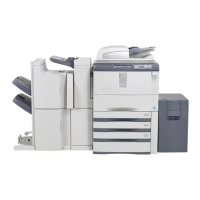
